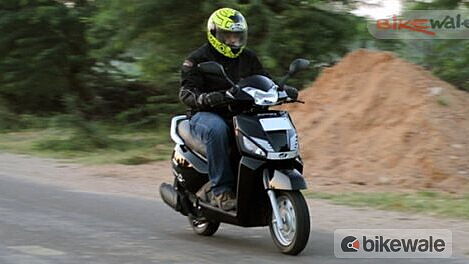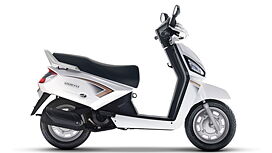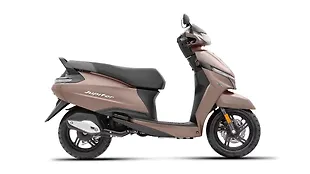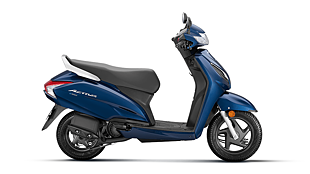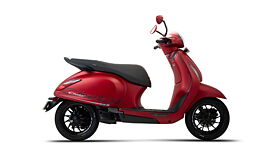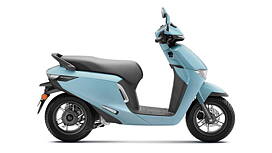Introduction

As running costs of pretty much everything motorised is going upwards every other month, affordable and economical means of transportation is becoming increasingly essential. And for those looking for a machine to meet these rudiments, one only needs to turn towards the enormous range of fuel-sipping scooters currently available in the market.
Mahindra, a relatively young name in the two-wheeler space, has a formidable range of scooters in its portfolio but there’s a catch - they all belong to the 125cc segment which is not exactly observed as the fuel efficient driving force for the mass market. Finally the home-grown UV giant is about to make some noise it in the high volume 110cc scooter segment with the all-new Gusto.
On paper this family-friendly scooter checks all the right boxes and it certainly looks the part, with chiselled yet conservative looks, and a handful of practical features. But moving beyond what’s apparent, how well does the Gusto behave in the real world and more importantly, is it a worthy competitor to the Hero Maestro, TVS Jupiter and the crowd favourite – the Honda Activa? A brief ride over the deserted roads of Jodhpur suggests it just might be.
Design

Some of Mahindra’s offerings are long in the tooth like the Duro or a bit too traditional for most buyers to care about, like the Flyte. Nonetheless, the brand is hard at work developing thoroughly modern products for the new-age buyer. And the result of these efforts is the new Gusto which represents a new global scooter platform destined for markets including Southern Asia, Central America and Africa.
Being an all-new global model, it is obligatory for the Gusto to look good and appeal to a wide variety of audience. In this regard, I’m not sure if Mahindra has set things straight. Though it is still a bold looking scooter, one that bears plenty of European influence in its design (where it was conceived), it’s a bit too restrained for my liking.
For starters, the front apron adorns a faux aluminium panel that houses the Mahindra logo in the middle, pseudo air vents and clear lens indicators. The handlebar-mounted headlight is a typical scooter affair although the design of the headlight itself is quite curvaceous, much like the Yamaha Alpha. After viewing the refreshing front-end look, the side profile appears a little restrained although in Gusto’s defence, it is pretty much the case with most 110cc scooters including the stylish Hero Maestro and the TVS Jupiter.

Move onto the rear are you’re greeted by the solid grab rail, followed by the radically-designed taillight assembly. The latter features integrated turn indicators and a chunky reflector strip along with the Mahindra badging right in the middle of the entire assembly. Other impressive design bits include the meaty exhaust, stylish yet functional rear-view mirrors and most importantly – 12-inch wheels which not only lift up the Gusto’s road presence but also come in handy over rough, undulating surfaces.
Taking all its rivals into consideration, the Gusto definitely is more attractive to look at compared to the standard Honda Activa and even the conservatively styled Yamaha Alpha. However, pit it against the TVS Jupiter or the Hero Maestro and the Gusto fails to leave as good an impression as either of the scooters. Despite its radical design elements, the Gusto is not as striking looking as an all-important global scooter should be.

Engine and Gearbox

The Gusto is propelled by a newly developed single cylinder engine, called the Mtech. This new 109cc engine is made aluminium entirely and develops 8bhp of power and 8.5Nm of torque. Thanks to its stronger bearings, a high venturi carburettor and a high energy ignition coil, the engine benefits from lesser mechanical losses. This explains the Gusto’s class-leading power and torque figures.
Like all 110cc scooters, power is transferred to the road using a CVT gearbox which makes commuting hassle-free with its smooth twist and go operation. Grab either of the brake levers, prod the starter button and this engine comes to life with very little noise, as compared to some of its rivals. No doubt, this 110cc motor is a very refined source of propulsion and it stays that way in both stop-start traffic conditions and out on the open roads.
Although the Gusto’s engine makes the highest amount of power in its segment, the whole scooter itself is quite hefty with a kerb weight of about 120 kilograms. As a result, it will accelerate the same if a heavy rider like me feeds in the throttle gently or twists it right open. The power delivery is hardly intimidating even for a novice although the Gusto can accelerate up to speeds of 60kmph quite easily and maintain a steady pace there about all day long.
Mahindra claims a top speed of 80kmph though on a couple of instances I was able to take it up to 85kmph (speedo indicated) on a level road. Add a lighter pilot and slight downhill to the mix and the Gusto is good for another 10kmph just for the record’s sake. Vibrations are kept well in check even at high speeds, the rear view mirrors deliver a nice buzz-free picture of the stuff behind you. This makes the Gusto comfortable enough for use even on the highways.
The Gusto has an ARAI-certified fuel efficiency of 61.5kmpl which is an impressive figure but not the best in class. While the Honda Activa betters it with 63.3kmpl, the TVS Jupiter comes in third with an overall efficiency of 59.2kmpl. Overall, the Gusto is Mahindra’s best bet in the scooter segment yet, thanks to the refined 110cc motor and its peppy performance.

Ride and Handling

The Gusto features an under born type tubular frame made of steel along with a wheelbase spanning 1275mm. Suspension duties are managed using hydraulic telescopic forks at the front and a single hydraulic coil spring at the rear. It all looks rather predictable right till you lift up the saddle because that’s where the Gusto’s party piece is to be found.
In what can only be defined as a pioneering feature, Mahindra is offering seat height adjustment for the Gusto. With this rather convenient new feature in place, the saddle height can be raised and lowered by up to 40mm, allowing riders of different statures to get comfortable behind the handle bar. The saddle height stands at 770mm in upper position and 735mm in lower position.
As tested in both highest and lowest setting, the height adjustment feature doesn’t affect the overall handling or poise of the scooter in anyway. The steering is quick, yet easy to control, and despite the scooter’s heft, the agility is still there and for most occasions, the Gusto is light on its feet.
Typical scooter suspension set up is tuned on the softer side and the Gusto follows the trend. Both ends of the scooter are filled with large 12-inch steel wheels clad in 90-section MRF Zappers which provided good grip even on the dusty, uneven back roads of Jodhpur. On most occasions, the ride quality was very impressive albeit a touch firm compared to a few alternatives such as the Yamaha Alpha and the Hero Maestro. The soft saddle further helps in easing off sharp bumps and undulations on rough roads.
Dynamically the Gusto is a properly capable product and can easily match up to the current crop of 110cc scooters including the Honda Activa, Yamaha Ray, TVS Jupiter and the Hero Maestro. When compared to models within the brand, the Gusto easily outshines the bigger displacement Flyte and the Duro in the ride and handling department.

Instrument console and features

For a scooter that comes with several features never seen before in this segment, the Gusto has a disappointingly dull looking instrument cluster. Both the analogue speedometer and the fuel gauge hooded in the silver housing look old fashioned. What comes as a saving grace here is the quick storage bin seen right beneath the instrument binnacle. Designed to store lightweight items like receipts, wallet, or even a phone, the quick storage came in handy during our brief stint with the scooter and I’m pretty certain it will be appreciated by the users on a daily basis.
Also new to the scooter segment is the flip key which is already on offer in the Centuro commuter motorcycle. The key can be used for operating find-me lamps and guide lamps function. Another segment-first feature is the LED pilot lamps designed to enhance the overall look of the scooter. The Gusto, then, is feature-rich like most Mahindra products, however, it should be noted that all of these unique features are available as standard only on the Vx variant. The lower-spec Lx variant misses out on height adjustable seat, remote flip key, LED pilot lamp, find-me lamps and guide lamps. While the feature list on the Vx variant is pretty impressive, I look forward to Mahindra also offering alloy wheels and a front disc brake option in the future. It will sweeten up the deal by a huge margin.

Verdict

All things considered, the new Mahindra Gusto fares quite well against its arch rivals including the Honda Activa, Hero Maestro, TVS Jupiter and the Yamaha Alpha. Though it’s hardly any surprise that it tops them all when it comes to the feature list. It is a Mahindra product, after all.
It is stylish, very refined and dynamically sorted too but are these attributes enough for a new joinee like Mahindra to breakthrough in the immensely competitive 110cc scooter segment? We will have to see at what price point Mahindra will position and market the Gusto and more importantly, how the customers react although all of the essential ingredients are there. The brand, in the past, has played its cards right by pricing the Centuro quite aggressively in the commuter motorcycle segment. If bestowed with an equally aggressively pricing strategy, the Gusto could well be poised as a serious contender in the 110cc scooter space.
Gallery
1/18
Double Tap to Zoom











